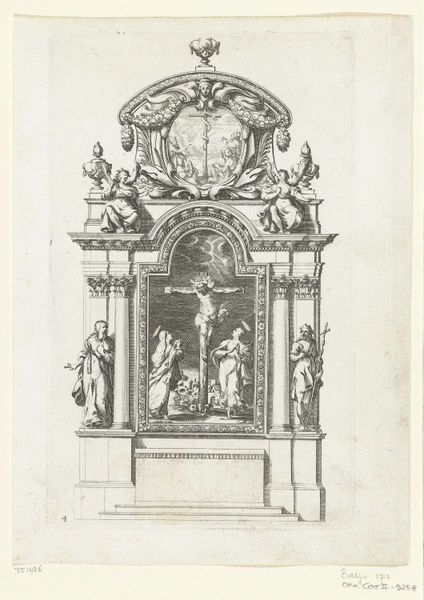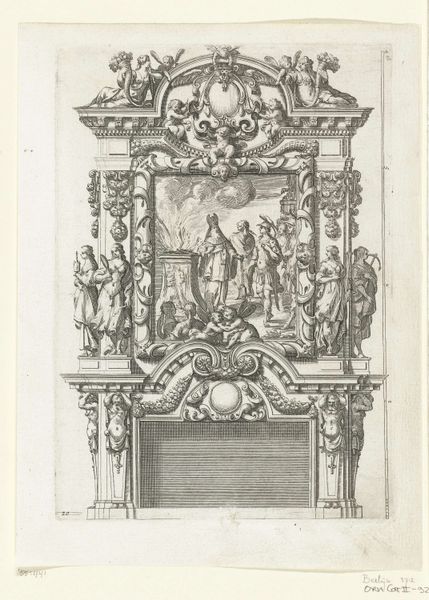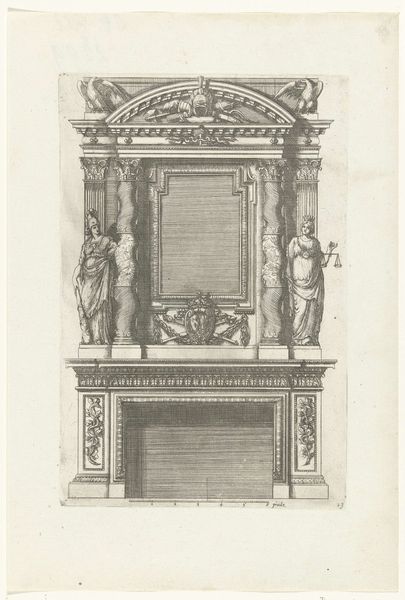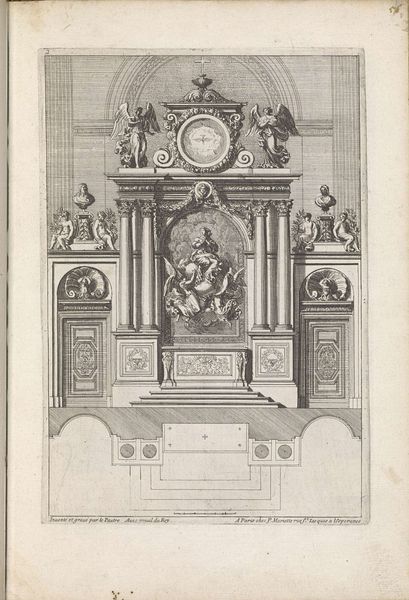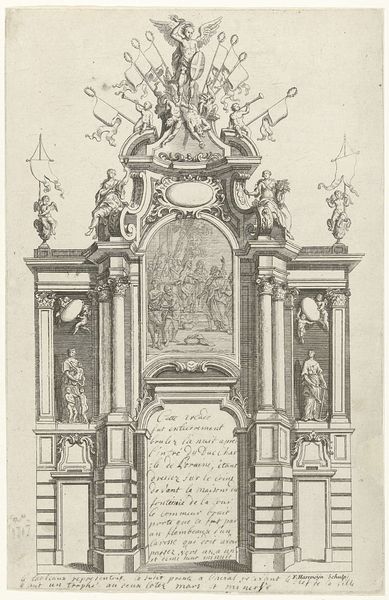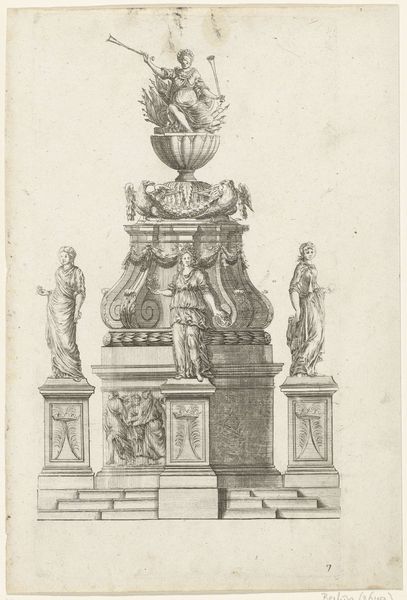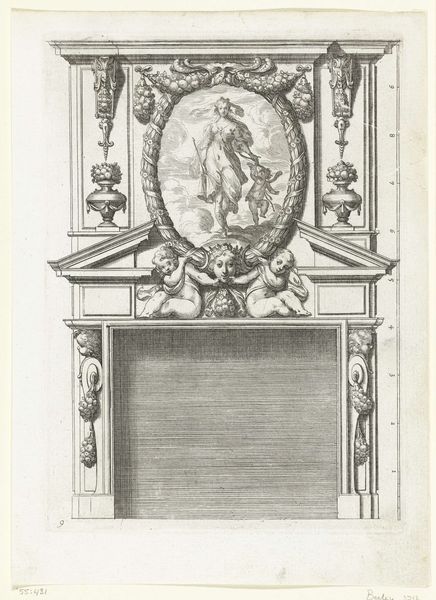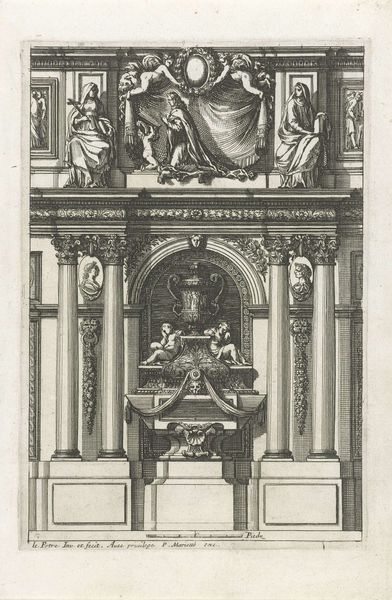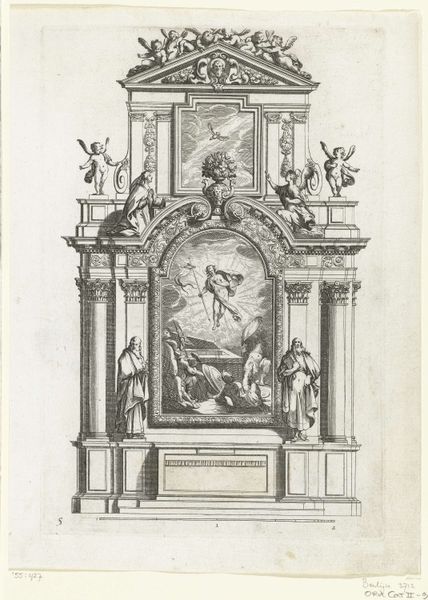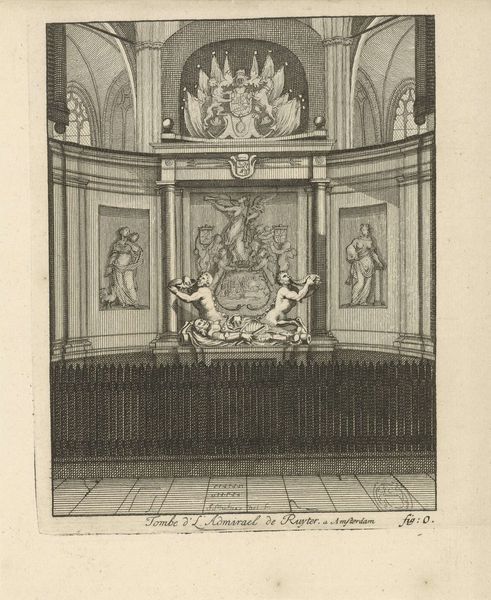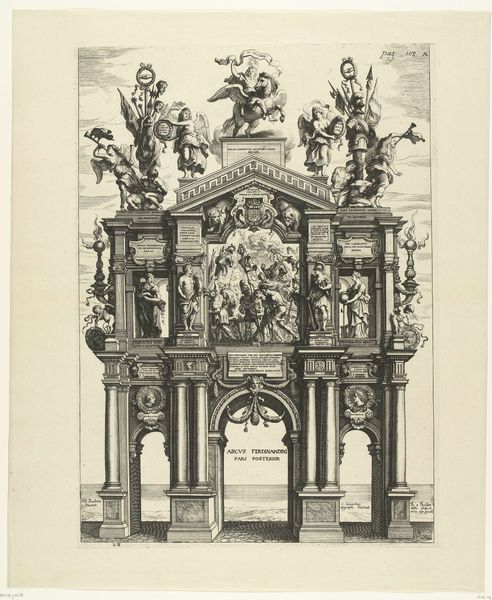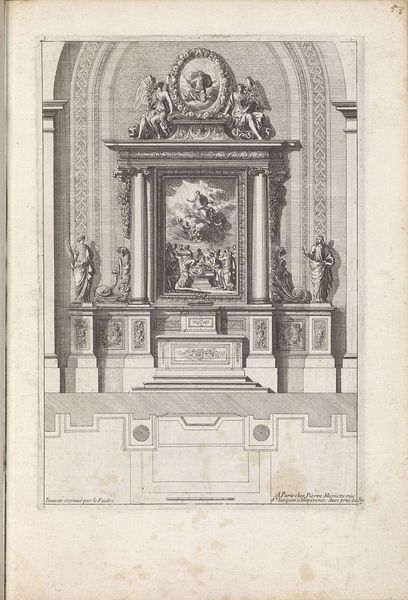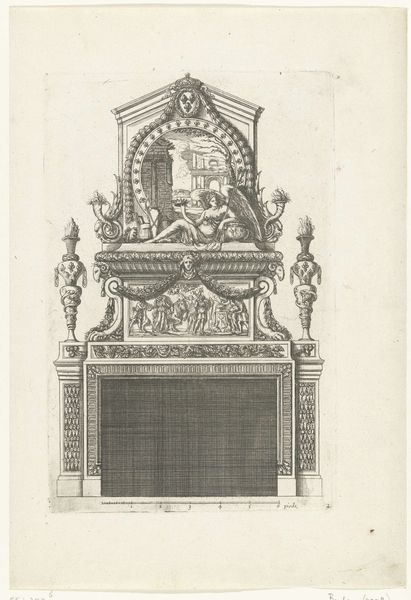
Grafmonument voor Willem Lodewijk, graaf van Nassau-Dillenburg, 1620 1631
0:00
0:00
anonymous
Rijksmuseum
print, metal, intaglio, engraving, architecture
#
portrait
#
baroque
# print
#
metal
#
intaglio
#
figuration
#
line
#
history-painting
#
engraving
#
architecture
Dimensions: height 335 mm, width 228 mm
Copyright: Rijks Museum: Open Domain
Editor: So, we're looking at an engraving from 1631 of a funeral monument dedicated to Willem Lodewijk, count of Nassau-Dillenburg. The inscription says it's from 1620 and is held at the Rijksmuseum. It is stunning in its intricacy and formality. What jumps out at you in this work? Curator: This print presents a fascinating snapshot of commemorative practices in the 17th century. The elaborate design is telling. Who do you think would have viewed such prints, and how might they have interpreted them? Editor: Well, perhaps other nobles or the public wanting to commemorate Willem Lodewijk? Were these kinds of prints common forms of public art? Curator: Precisely. These prints weren’t just artistic endeavors, they were instruments of political and social power. Think of them as carefully constructed propaganda, widely circulated. The grandeur of the monument, even in print form, reinforced the status of the Nassau family and their lineage. How do you see the architecture working in this goal? Editor: I see… the use of baroque elements, the classical figures, and the heraldry. They all reinforce the authority and legacy of the commemorated person and their family, framing them in a visual language of power. The setting and adornments amplify his importance. What does that skull mean? Curator: Ah, the vanitas motif. The skull is a stark reminder of mortality, juxtaposed with the enduring monument, emphasizing the legacy he left behind despite death. It's also interesting to note that these images become historical records in themselves. What kind of public roles could this art have served? Editor: Besides being records, I guess these images shaped public memory. Thinking about it now, this isn’t just art, it's really political messaging. Curator: Exactly. And understanding that changes how we view not only this image but many other historical artworks.
Comments
No comments
Be the first to comment and join the conversation on the ultimate creative platform.
